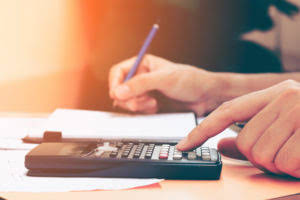Double declining balance depreciation definition
26/09/2022 20:29

In the final year, the asset will be further depreciated by $2000, ignoring the rate of depreciation. We can incorporate this adjustment using the time factor, which is the number of months the asset is available in an accounting period divided by 12. Another thing to remember while calculating the depreciation expense for the first year is the time factor. Unlike the straight-line method, the double-declining method depreciates a higher portion of the asset’s cost in the early years and reduces the amount of expense charged in later years. In this lesson, I explain what this method is, how you can calculate the rate of double-declining depreciation, and the easiest way to calculate the depreciation expense. Once the straight-line rate is established, the Double Declining Balance rate is found by multiplying this rate by two.
When to use the DDB depreciation method

Adhering to standards like Generally Accepted Accounting Principles (GAAP) or International Financial Reporting Standards (IFRS) is critical for consistency and transparency. 1- You can’t use double gym bookkeeping declining depreciation the full length of an asset’s useful life. Since it always charges a percentage on the base value, there will always be leftovers. What it paid to acquire the asset — to some ultimate salvage value over a set period of years (considered the useful life of the asset).
- For example, if an asset has an initial cost of $10,000 and a DDB rate of 40%, the first year’s depreciation would be $4,000 ($10,000 multiplied by 40%).
- By following these steps, you can accurately calculate the depreciation expense for each year of the asset’s useful life under the double declining balance method.
- It can also offer a tax advantage by deferring taxable income through higher early-year deductions, though tax depreciation rules may differ.
- We collaborate with business-to-business vendors, connecting them with potential buyers.
- The two most common accelerated depreciation methods are double-declining balance and the sum of the years’ digits.
- You can calculate an asset’s straight-line depreciation rate by dividing one by its useful life.
Tools and Calculators for Double Declining Depreciation Depreciation Rate: Straight Line Depreciation Rate

For reporting purposes, accelerated depreciation results in the recognition of a greater depreciation expense in the initial years, which directly causes early-period profit margins to decline. The steps to determine the annual depreciation expense under the double declining method are as follows. Certain fixed assets are most useful during their initial years and then wane in productivity over time, so the asset’s utility is consumed at a more rapid rate during the earlier phases of its useful life. Under the generally accepted accounting principles (GAAP) for public companies, expenses are recorded in the same period as the revenue that is earned as a result of those expenses.
How to Calculate and Pay Estimated Corporate Taxes Using Form 1120-W
If, for example, an asset is purchased on 1 December and the financial statements are prepared on 31 December, the depreciation expense should only be charged for one month. In the accounting period in which an asset is acquired, the depreciation expense calculation needs to account for the fact that the asset has been available only for a part of the period (partial year). This guide offers a complete, step-by-step approach to accelerated asset cost allocation. The Units of Output Method links depreciation to the actual usage of the asset. It is particularly suitable for assets whose usage varies significantly from year to year.
In this scenario, we can use the formula to calculate the depreciation expense for the first year. Accountants use the straight line depreciation method because it is the easiest to compute and can be applied to all long-term assets. However, the straight line method does not accurately reflect the difference in usage of an asset and may not be the most appropriate double declining balance method value calculation method for some depreciable assets.

- Companies use depreciation to spread the cost of an asset out over its useful life.
- In the final year of depreciation, make sure the depreciation expense is adjusted so that the asset’s book value equals the salvage value.
- In the accounting period in which an asset is acquired, the depreciation expense calculation needs to account for the fact that the asset has been available only for a part of the period (partial year).
- Double-declining balance depreciation applies a fixed rate to an asset’s decreasing book value each year.
- In summary, MACRS offers a tax-efficient way to allocate depreciation, but understanding its nuances and choosing the right method is crucial for financial planning and reporting.
- By front-loading depreciation expenses, it offers the advantage of aligning with the actual wear and tear pattern of assets.
Unlike straight-line depreciation, the DDB method doesn’t consider salvage value in calculations until the final year, when the book value approaches the salvage value. For example, if the fixed asset management policy sets that only long-term asset that has value more than or equal to $500 should be recorded as a fixed asset. Those that have value less than $500 should be recorded as expenses immediately. In this case, when the net book value is less than $500, the company usually charges all remaining net book balance into depreciation expense directly when it uses the declining balance depreciation. As the declining balance depreciation uses the net book value in the calculation, the company doesn’t need to determine the depreciable cost like other depreciation methods. In other words, unlike other depreciation methods, the salvage value is ignored completely when the company calculates the declining balance depreciation.
- Because of this, it more accurately reflects the true value of an asset that loses value quickly.
- The DDB method accelerates depreciation, allowing businesses to write off the cost of an asset more quickly in the early years, which can be incredibly beneficial for tax purposes and financial planning.
- Importantly, under MACRS rules, the 200% and 150% declining balance methods automatically switch to straight-line once that provides an equal or greater yearly deduction.
- Partial-year adjustments aim to match depreciation expenses more precisely with the periods during which the asset was in use, offering a more accurate depiction of financial performance.
- Bench simplifies your small business accounting by combining intuitive software that automates the busywork with real, professional human support.
- This includes high-tech equipment, vehicles, or machinery that quickly become obsolete or incur higher repair and maintenance costs as they age.
The mathematics of Double-declining depreciation will never depreciate an asset down to zero. Because depreciation, ultimately, reduces taxable income, we want to depreciate each asset down to zero or expense money is left on the table. Once you calculate the depreciable cost each year, just calculate the depreciation expense of 40%. Imagine a company purchases a machine for $50,000 with an estimated useful life of 5 years and no salvage value. You calculate it based on the difference between your cost basis in the asset—purchase price plus extras like sales tax, shipping and handling charges, and installation costs—and its salvage value. The salvage value is what you expect to receive when you dispose of the asset at the end of its useful life.
- Under this method, a constant depreciation rate is applied to an asset’s (declining) book value each year.
- On the balance sheet, DDB’s accelerated depreciation results in a lower asset book value in early years.
- Owning assets in a business inevitably means depreciation will be required since nothing lasts forever, especially for fixed assets.
- At the end of the second year, we subtract the first year’s depreciation from the asset’s cost, and then apply 40% to that number.
- This method is simpler and more conservative in its approach, as it does not account for the front-loaded wear and tear that some assets may experience.
- Understanding how to calculate and apply this method can provide valuable insights into asset management and financial planning.

By automating the complex calculations required for methods like DDB, AI ensures accuracy and saves valuable time. These tools can quickly adjust book values, generate detailed financial reports, and adapt to various depreciation methods as needed. Useful life refers to the estimated period over which an asset is expected to provide economic benefits to a business. This period is typically expressed in years and represents the duration the asset is anticipated to be productive.
Accounting Crash Courses
Apply the DDB rate to the asset’s net book value (NBV) at the beginning of each year. As a prolific writer, she leverages her expertise in leadership and innovation to empower young professionals. https://servipluscentrodeservicio.com/2025/06/20/page-4-2/ With a proven track record of successful ventures under her belt, Erica’s insights provide invaluable guidance to aspiring business leaders seeking to make their mark in today’s competitive landscape.
Calculate declining balance depreciation
The double-declining-balance method of depreciation is a form of accelerated depreciation. The double-declining balance (DDB) method is a widely used asset depreciation method. It’s a form of accelerated depreciation that allows businesses to allocate a higher portion of an asset’s cost as an expense in the earlier years of its useful life.




















